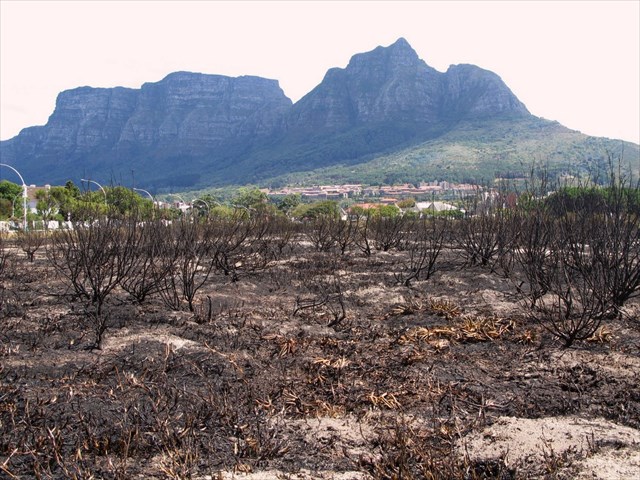
Spring Flowers on Rondebosch Common
Rondebosch Common is a national heritage site as well as an important area for the conservation of Cape Town's rich biodiversity. Regarding its heritage value, the land now forming the Common was used as a camping ground by Batavian forces during the 1806 British invasion of the Cape. The site continued to be used as a camp for British forces during the first half of the 19th century. In 1855 the Rector of St Paul's Church, Rondebosch, was granted the right to graze his cattle on the land. At the same time two pieces of land adjoining the Common were granted to the Wesleyan and Muslim communities to be used as graveyards. During the 19th century the Common was used for various sports: notably, rugby, cricket and golf. The first recorded cricket match was played on January 5 1808; Rugby was played in the mid 19th century. The Villager Football Club established its first headquarters on the south-west edge of the common where the scout hall now stands. The Cape Golf Club (later Rondebosch Golf Club), developed a nine-hole golf course, and members played here from 1891 to 1937.

Cattle Grazing circa 1900

An Rugby Game recorded in an Otto Landsberg painting

Flowers of the Common
With respect to its value for nature conservation, anyone interested in the Rondebosch Common should obtain the excellent book Rondebosch Common, published by the Friends of Rondebosch Common. Here the history, flora and fauna, and conservation activities are well documented.
Today the Common supports a natural remnant of the critically endangered Cape Flats Sand fynbos, with patches of renosterveld, and is also a seasonal wetland. Close to 300 plant species have been verified on the site, many are indigenous and nine appear in the Red Data List of threatened and endangered plant species. 110 different bird species have also been recorded. As with all Fynbos, to maintain this diversity the Common must undergo occasional burns. While the fires are necessary for the health of the low growing shrubs and plants the non-indigenous pine trees display fire scars. This may be seen amongst the cluster of pine trees that now mark the location of an earlier Muslim graveyard towards the southern edge of the Common.

Fire on the Common
Rondebosch Common is very popular among local residents, who can be seen jogging, walking their dogs, exercising and enjoying the open space every day. In years gone bye sports such as cricket, rugby, soccer, golf and athletics took place on the Common.
A Friends Group is actively involved at this site and management input is provided by the Biodiversity Management branch of the City. In the first decade of the 21st century much effort was put into restoring the seasonal wetland habitat that once occurred near the western edge of the common.

Restored Seasonal Wetland
Now substitute numbers for the letters A to E
The heritage area of the Common is AB
The number of indigenous plant species on the Common is CDE
The hide coordinates in Degrees and Minutes are
S 33 (A+C)(A+D).(A+C)(A-C)(E) E 18 (C)(B).(A+C+D)(A+C)(C)
